Dave Matthews Band: Musically Speaking
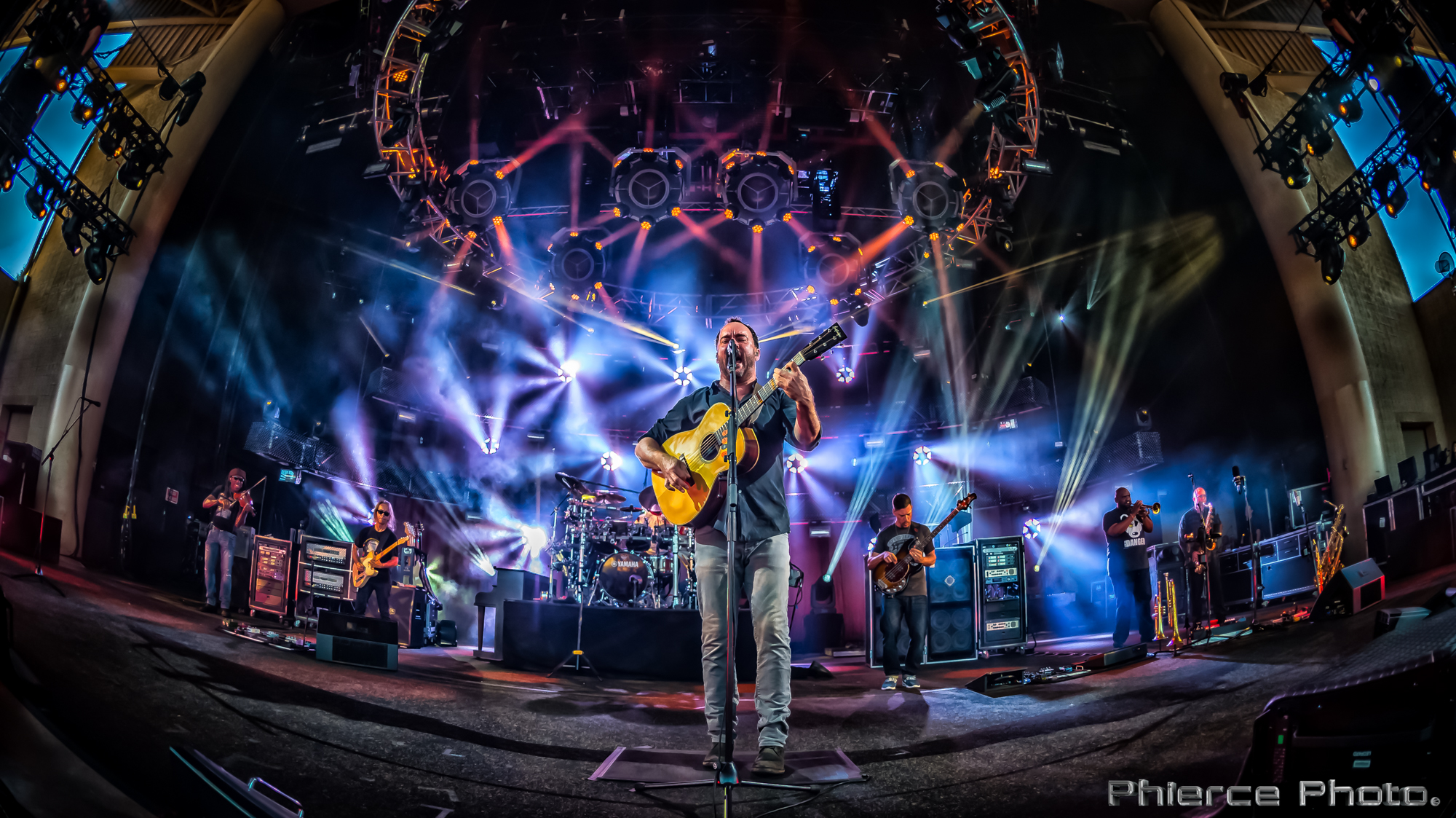 Today marks Dave Matthews’ 50th birthday. To honor fifty years of the DMB bandleader, we’ll be celebrating his work all week long beginning with our March 2013 cover story on the band shortly after the release of their ninth album Away From the World.
Today marks Dave Matthews’ 50th birthday. To honor fifty years of the DMB bandleader, we’ll be celebrating his work all week long beginning with our March 2013 cover story on the band shortly after the release of their ninth album Away From the World.
Dave Matthews’ dressing room backstage at Philadelphia’s Wells Fargo Center has the look of a creative hive. There’s an electric piano set up in the corner, amp humming. A sketchbook sits on the table, charcoal pencils nearby. The trusty acoustic guitar waits on a stand. There’s a sound system and on top of the rolling wardrobe case, with neatly hung shirts inside, a laptop chirps as its incoming emails arrive.
Ignoring it, Matthews sips his tea and monitors developments in the outside world on his smartphone. Some days Matthews uses this room for only a few minutes, but like many things within the DMB universe, it’s set up for the moment when inspiration strikes–he’s been known to record song ideas seconds before starting a show. As we exchange hellos, the flicker of an incoming text draws his eye. In one fluid motion, he looks, then casually flips the phone over. No thanks. He apologizes and vows to ignore the phone.
Besides, in a little while, when he goes to work, Matthews will come face to face with the awesome distracting power of the smartphone. The room outside this door will soon fill up with 20,000 enthusiastic people whose idea of enjoying live music now includes capturing bits of it on video, texting reactions to friends and updating their statuses minute by minute on Facebook. House lights will dim, and Matthews will walk into the familiar head-rush roar of an anticipating crowd. But the first thing he’ll see are faces illuminated from below in halos of technology blue, thumb-typing at breakneck speed, snagging a fix from a habit-forming lifeline of a device.
I ask him what that’s like. He utters one of those “funny the way the world is” sighs. For all I know, the Frontman Committee of the Arena Rock Trade Association has been discussing this very issue. For all I know, it could be the thing he fears the most: He’s got a formidable band, a nimble production crew and 100 killer songs at the ready, but all that might not be enough to counter the next almighty tweet.
“We’re becoming more and more of an impatient society,” Matthews says flatly, like he’s just observing, not judging. “We want the instant fix and we will find a way to get it. All of us–the band and the crew–have noticed in the last few years how people are using their phones during the shows more. I’m not sure if it takes away from the experience we’re trying to create. But I know, from my own life, that the high-speed world can be really distracting. It can prevent you from being fully in the moment.” With this band, there is nothing more important than being in the moment.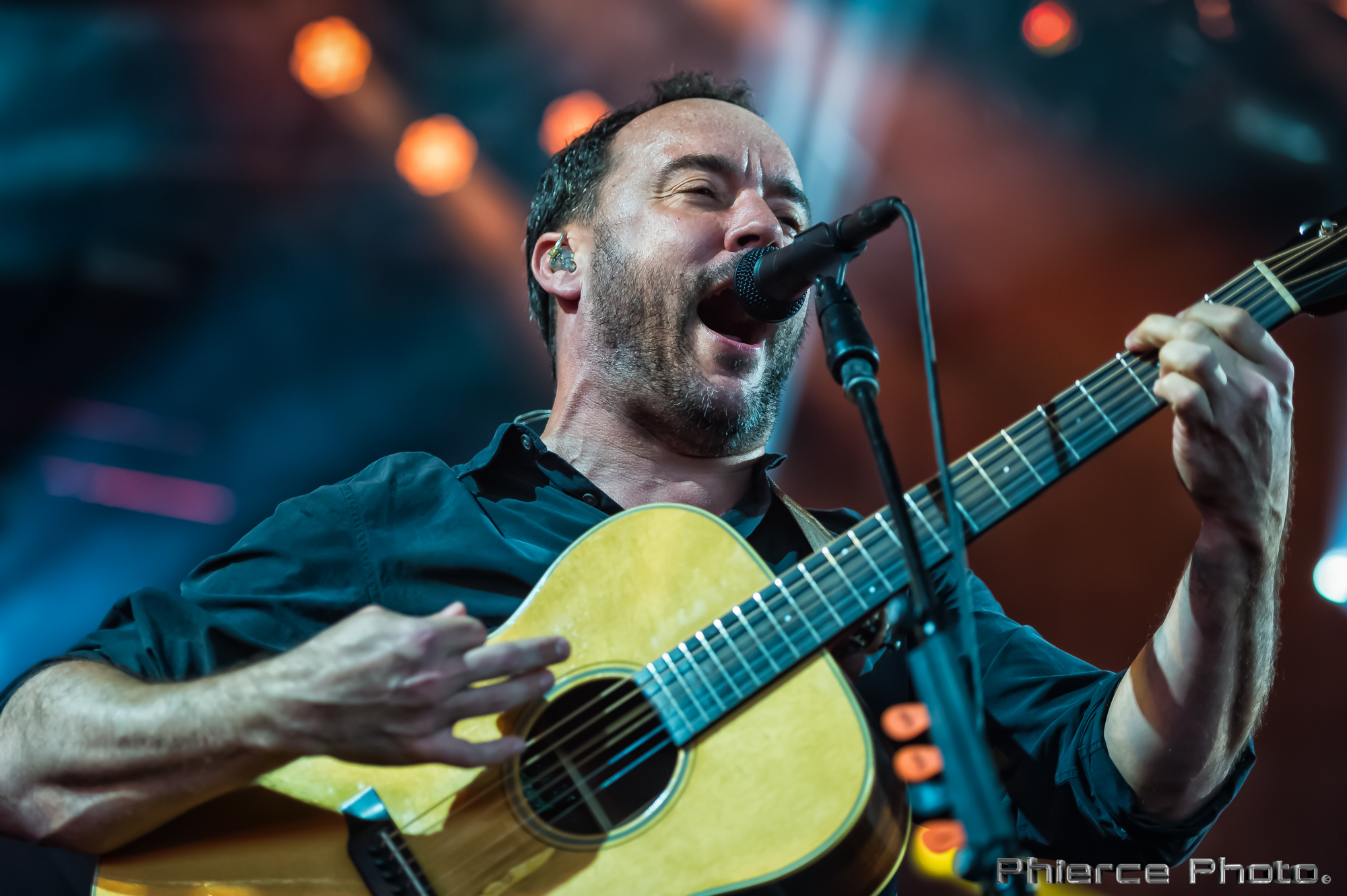
I flash back to a few nights earlier, when Matthews and his six-piece band played First Mariner Arena in Baltimore, the smallest venue on the winter tour. They opened with “Seek Up,” from their 1993 debut album Remember Two Things, and took their sweet time launching it. Carter Beauford, the drummer, started the rhythm–a loping triple-meter pulse with distinct African roots–which guitarist Tim Reynolds then magnified with a brilliant arpeggiated matrix on electric guitar.
For a few minutes, as the Baltimore faithful warmed up with some ritual hollering, the groove was incredibly light, almost fragile. And riveting. The horns entered, Beauford greeting them with rapid-fire complications and syncopations. Nobody onstage was in a hurry and after a beautifully weepy violin solo from Boyd Tinsley, Matthews approached the microphone, looking ready to kick things into the next gear. But then, without breaking his rhythm guitar pattern, he veered away–as if he was enjoying the way his band was cruising and didn’t want to push things forward too quickly. That triggered another extended foray and by the time Matthews began singing, every living soul in the place was keyed up. The band erupted. The house responded with its own, even louder eruption. Liftoff.
The entire introductory adventure took about ten minutes. It went by in a flash and watching it unfold, you wondered about all the research on the modern music consumer–that fickle soul who allegedly demands instant gratification, thinks his playlist rules and has been trained not to waste a precious second on anything he doesn’t love right away. The vast majority of this crowd was all-in, riding the slaloms carved by a band that wasn’t doing anything terribly special to “entertain,” through an epic journey that wasn’t piledriver rock or skronky jazz or some crossbreed. For 10 minutes. That’s a long damn time to be playing instrumental music in a hockey rink. There’s high boredom potential, at least among the designated-driver girlfriends in the crowd, who maybe tolerate Dave but also have a sweet spot for Carly Rae Jepsen. Most arena acts fit two fully tricked-out production number hits into the span of that one intro.
I mention this to Matthews in Philadelphia as we’re talking about the getting and keeping of attention. “I read all the stuff about how people don’t care about anything that’s long-form or substantial anymore, and I get it, I’m aware of it in my own life,” Matthews says. “But I think we buck that trend, in a way. What we do is not instant. Our music requires a bit of effort on the part of the listener. I think people who come to our shows know that we are committed to pursuing some new something when we play–for us, a show is an invitation to come be a part of this thing we’re going to explore together. That seems to encourage a sense of investment in what we’re doing or a measure of patience–because it’s pretty obvious this isn’t an autopilot situation. We might spin out spectacularly… [but] no matter what happens, it’s not going to be the same as the last time. Or the night before.”
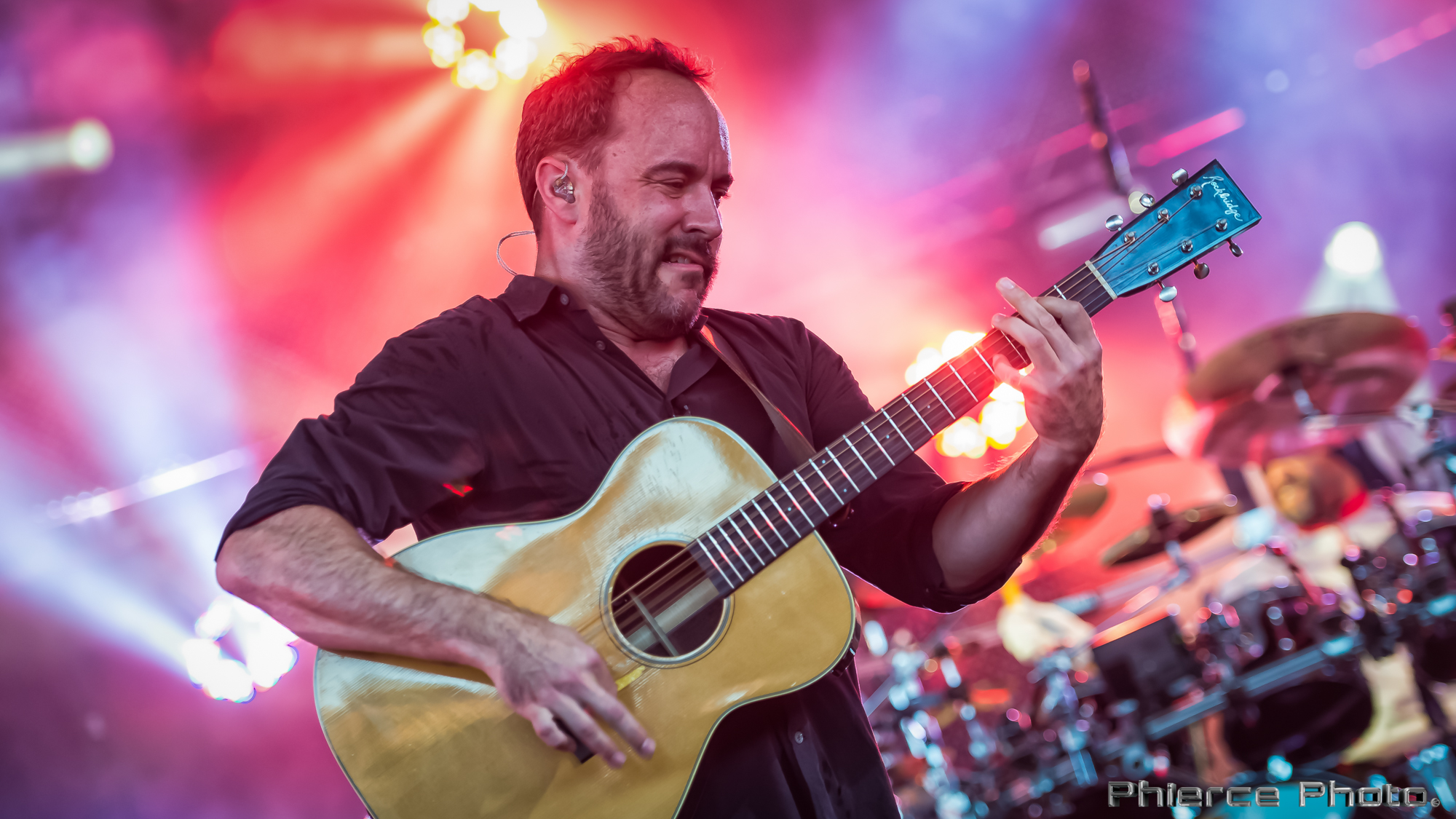 It’s an hour before showtime in Baltimore and Carter Beauford is sitting on his tranquil bus, snapping out a dastardly polyrhythm on his things. He’s got gloves on, sticks in hand, and at first, it seems like our interview might distract him from what’s obviously part of his warm-up routine. I ask him what explains the enduring success of this band, which has been playing live for more than 20 years. He doesn’t miss a beat. “It’s really just this: When we play, we try to turn the music into a living thing.”
It’s an hour before showtime in Baltimore and Carter Beauford is sitting on his tranquil bus, snapping out a dastardly polyrhythm on his things. He’s got gloves on, sticks in hand, and at first, it seems like our interview might distract him from what’s obviously part of his warm-up routine. I ask him what explains the enduring success of this band, which has been playing live for more than 20 years. He doesn’t miss a beat. “It’s really just this: When we play, we try to turn the music into a living thing.”
Like one of his heroes, the great jazz drummer Max Roach, Beauford believes music is best appreciated as a story–an organic narrative that can, and maybe should, change at any second.
“I see so many bands doing their music just like the record,” he says. “I’m like, ‘Don’t tell the story the same way every time. Give it some different punctuation.’”
A good night, he continues, is not when he and everyone onstage and on the production team executes flawlessly. Instead, a night is successful when they go tearing off and wind up someplace they’ve never visited before. This is not easy, he adds. It requires an enormous openness, a receptivity to the ideas of others, and (not least) the technical facility necessary to react to anything.
“There are nights you struggle with every note and that can lead to panic,” he admits. “If you’re not right there, physically or mentally, you could have a night where you can’t get the landing gear up. The music will kick your butt from note one.”
So Beauford does what he can in advance. Stretching. Breathing. Pummeling his extremities. I observe that the rhythm he’s playing, as precise as it is, can hardly be described as a physical “warm-up.” After all, he’s barely moving. The drummer flashes the smile of a guru who’s just been handed a teaching opportunity.
“That’s what you’d think!” he cackles. “But here’s the paradox: The mechanics are not just to loosen up. They’re for the purpose of getting my head into it. So that when we start, I’m not thinking drums. I’m focusing on the musical paintings we’re creating.”
As the interview winds down, I thank him for his time and wish him a happy show. He returns the pleasantries and, as I’m stepping off the bus, he calls out, “I’ll be talking to you musically in a little while!”
Talking to you musically. A jazz notion. Also, quite possibly, the guiding philosophy and not-so-secret trade secret of Dave Matthews Band. What goes on when the band plays can seem like an orderly procession through a set of high-energy songs–the usual big-venue rock ritual, the perfect accompaniment to cold beers and fat joints.
On another level, though, there are overlapping conversations in progress. Conversations between musicians, coursing beneath the melodies and in the cracks of the groove. Conversations between the band and the room, the band and a production crew intent on catching and reinforcing every wild-idea detour. Conversations between old and new treatments of songs–even tunes that are fairly “locked down” in terms of arrangement and approach can erupt in new ways. People show up for a Dave Matthews Band show not to hear favorite tunes faithfully reproduced, but to see where the conversations will lead. Onlookers become participants, part of the conversation.
“I’ve noticed, lately, that there’s this large contingent of our audience that doesn’t want our hits,” Matthews says. “We start playing one of the radio songs and you can almost hear them groaning.” He adds that this is, in a way, all he could ever hope for: “Because it says that our listeners really are about the journey. There’s an openness to elation, which is what we’re always seeking, and at the same time an awareness of its opposite. Which is always lurking.”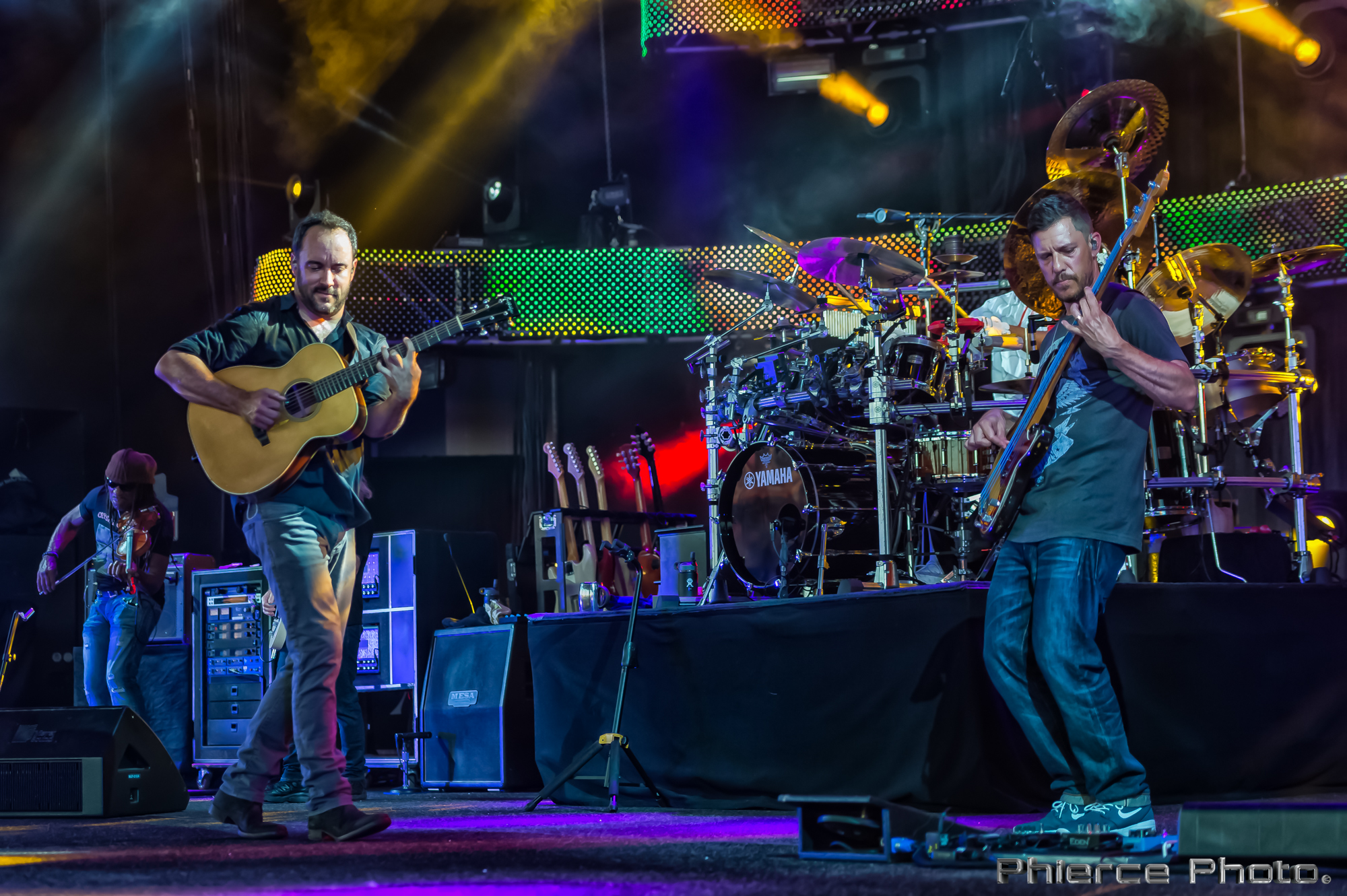 Max Roach considered jazz improvisation to be the art of telling a story within music. When a soloist is in flight, the accompanists are charged with following the narrative in a way that’s supportive. That can mean not playing a ton of notes, but instead providing apt rejoinders and small gestures that keep things moving. The tone and quality of the conversation depends on the input of each participant–fireworks happen when the crosstalk reaches a fever pitch or when it feels like everyone involved is about the push the train off the tracks.
Max Roach considered jazz improvisation to be the art of telling a story within music. When a soloist is in flight, the accompanists are charged with following the narrative in a way that’s supportive. That can mean not playing a ton of notes, but instead providing apt rejoinders and small gestures that keep things moving. The tone and quality of the conversation depends on the input of each participant–fireworks happen when the crosstalk reaches a fever pitch or when it feels like everyone involved is about the push the train off the tracks.
In this ethos, it’s not just Carter Beauford “talking to you musically”–it’s seven musicians listening carefully to each other, chasing overlapping and intersecting ideas, spiraling off into tangent fantasy worlds. Maybe they wind up on an urban street corner for a moment of break-dancing or detour into a parade in Bahia where the beat is sharded off into syncopated glitter. Sometimes the conversations happen in the background behind Matthews as he sings. Sometimes they occupy the foreground of the music. Often, they surge back and forth; on a good night, no one musician dominates.
There is an almost obsessive regard for the overall whole, the meeting point in the delicate center of the music. Having experienced the magic that happens when they follow somebody’s epic tale as it unfolds, everyone involved (including the sound and lights folks) locks into the narrative possibilities, and move it along ever so gently.
“When we come back together after a break, the first thing that blows me away is how intense the listening is,” says Reynolds, who’s been in the DMB orbit since the very early Charlottesville, Va. Days. “It’s almost like you get reacquainted with a certain discipline. Like, ‘Oh yeah. This is the zone where we all are sorta leaning in, wanting to hear what is going to happen, looking for little openings.’ Somebody will do a very small thing, like a temp change or even almost a grace note, and that sets everything off in a new direction. After you get a taste of that kind of playing, you want to do it all the time.”
Desiring to play at this interactive level is merely a starting point. Skill is required. To respond with aptness and eloquence in the moment–in front of thousands of people who expect to be swept into another time zone–is not something everyone can do. You need tremendous ears and sharp reflexes, a curious disposition and the ability to change lanes without snarling traffic. Intuition helps, too.
Jeff Coffin, the saxophone player who stepped in when founding member LeRoi Moore died from complications from an ATV accident in August 2008, says he got psyched out by the musical conversations at first. “You sorta have an idea about the kind of music that happens in front of 20,000 people, that it’s a show that pretty much runs on computer. This is the total opposite–a little jazz combo.” (Trumpeter Rashawn Ross officially joined the group in 2006, adding yet another voice to the nightly musical conversation.)
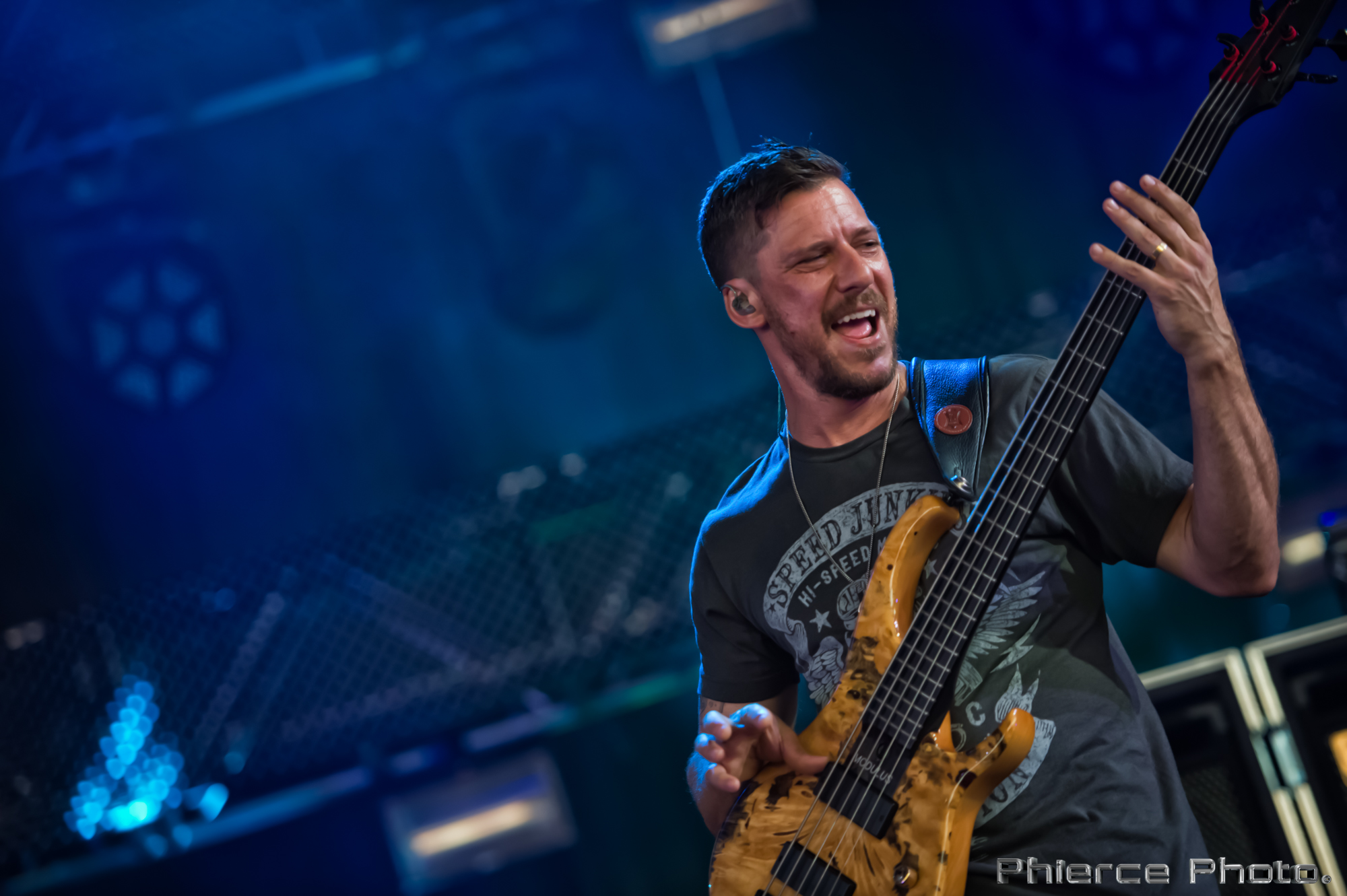 Bassist Stefan Lessard puts it this way: “We’re all serious about improving as musicians and we’re serious about creating a really interesting live show. We work on all the aspects that go into that. But at the same time, when we play, were playing for the music itself. Trying to take it beyond where it was the night before.”
Bassist Stefan Lessard puts it this way: “We’re all serious about improving as musicians and we’re serious about creating a really interesting live show. We work on all the aspects that go into that. But at the same time, when we play, were playing for the music itself. Trying to take it beyond where it was the night before.”
That goal, along with a fundamental respect for the spark of inspiration, runs through–and drives–the entire organization. Backstage, everyone appears to be engaged in the same pursuit; the crew is expected to react just as quickly as the band members are. There’s a sense that the whole team, including the folks who set up the Matthews’ dressing room when the gear first arrives, is involved in creating the conditions under which on-the-fly creativity can flourish. The moment when the band veers from the script sets off panic on most rigs; that’s the moment this crew wants. The worship of spontaneity radiates from the band to the sound guy to the vide crew and–Matthews believes–out into the world at large.
For instance, the lighting schemes are not programmed in advance. When, after the last indoor tour, the band talked about being somewhat blinded by spotlights coming from the front of the house, the entire stage set and lighting rig were redesigned. This time, the manually operated follow spotlights are positioned on the side of the stage.
Matthews laughs at the suggestion that he’s created a unique working environment. “Yeah, people leave us to go work on other tours and when they come back they always say how your average rock show is a walk in the park compared to this,” he says.
Lighting designer Fenton Williams, one of several production people who have been with the band since the early days, agrees: “Everybody involved on the production side sees these guys [the musicians] working on their craft every day, and they also see how different the music can be literally every time out. So how do you work with that? Either you know how to respond in a split-second or you don’t. When you’re around that kind of energy, it makes you want to go way beyond whatever’s asked of you.”
Just as the musicians have steadily improved, the core production team has grown into their particular jobs, expanding on them whenever possible. Every show day, Williams begins by making sure that the assorted lighting effects that require programming are in place and ready to go. He gets the setlist about an hour before the first downbeat and then, he’ll block out the transition points and large-scale mood changes that he’ll be using as guideposts. (These change every 20 minutes or so, depending on the material.)
“What we try to do is put together some colors and textures that we’ll manipulate and evolve in real-time and often, it’ll be so subtle that you won’t notice the whole mood has changed,” he says. During the show, there’s a running discussion about the deployment of video as well. If the video screens have been active, tracking close-ups of the musicians for two or three tunes, then Williams will shift gears to more abstract visuals for a little while. Within each tune, he’ll follow the conversation that’s unfolding onstage and seek ways to highlight it.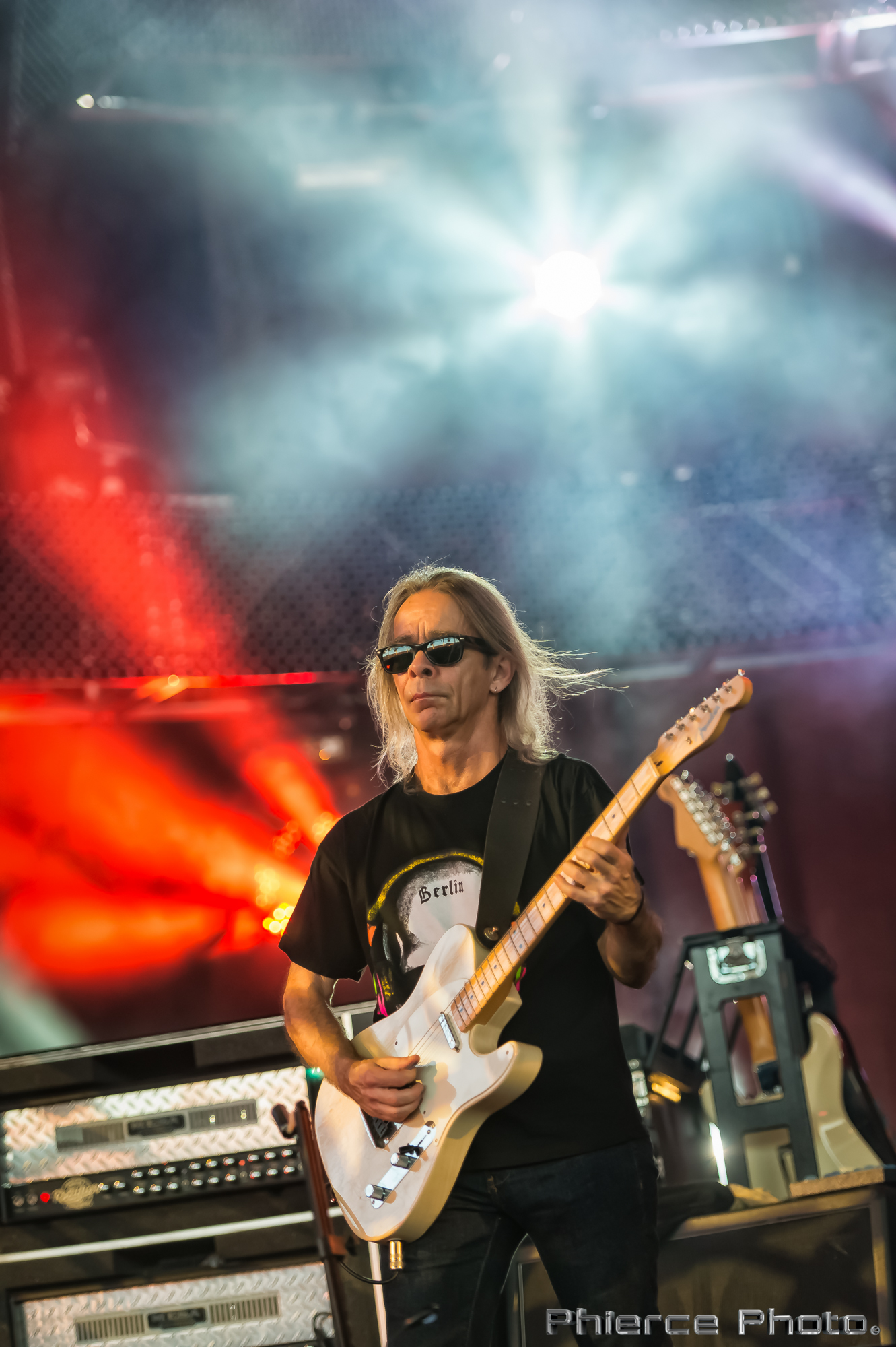
At one point during the Philadelphia show, Coffin and Reynolds got into an extended back-and-forth exchange, trading quotes of “Greensleeves” and phrases of irregular length and extraordinary beauty. Williams threw a shaft of purple light over the guitarist’s area first, then switched it to where Coffin was standing, and as the dialogue unfolded, the lights surged and dissolved in beautiful rippling waves.
“Listening to Tim and Jeff toss ideas back and forth like that,” Williams says, recalling the moment, “you have to catch that and be ready to make something out of it. That keeps us on our toes all night. You’re listening and following the ride they’re on, trying to enhance it. On any tune, at any point, I’m aware that there’s a good chance I could screw this up. You don’t know what’s going to happen. You try to hit the timing just right and hey, you’re human. Sometimes your timing isn’t as good as you think it is. And there’s no pausing and stopping. It’s thrilling.”
By now, the basic arc of the Dave Matthews Band story is well known. In 1991, a guy with a voice and ambition connects with the members of Charlottesville’s most forward-thinking ensemble, a jazz group called Cosmology, led by trumpet player and DMB guru John D’earth. They play regularly at the bar where he works, and begin a shoestring touring operation in the Southeast.
Within two years, they’ve developed an almost eerily loyal following, established a network of clubs and college venues to play, nailed down a record deal (which they regard not as a holy grail but a necessary part of the process). The “myth” grows, but the band remains focused on its live performance. The group’s earliest friends and supporters get involved in the growing enterprise, handling everything from T-shirt sales to road-managing duties. In many cases, the key members of the current production team have been on board since the beginning. Williams, for instance, was the band’s first road manager.
Compared with the typical bar-band rock trajectory, this ramp-up was almost accomplished at hyper-speed: Within a year of the release of Under the Table and Dreaming in 1994, the band was playing large spaces, including Colorado’s famed Red Rocks Amphitheatre. Everybody involved remembers the early tours being long and extensive and exhausting–but also acknowledges that they afforded Matthews and company the time to undertake a deep examination of the craft of live music. And, just as crucially, they had time to study the art of record-making.
Says Matthews: “When I think about that time, it was us getting used to things, realizing that to play the way we wanted to, you couldn’t take anything for granted. That’s the great gift of basing what you do around improvisation: You have to create it every time. As we got better at that, we started thinking about how on earth to capture that on a studio record. Very difficult.”
With help from producer Steve Lillywhite–who did the first three RCA DMB records as well as the most recent Away from the World–the band began to approach recording in less conventional ways. Matthews says that some of the material from 1998’s Before These Crowded Streets started out as brief jam fragments that the producer caught while the group was warming up. On that album and the subsequent ones, the band stretched in radically stylistic ways, exploring deep African grooves and tightly would fund and windblown balladry. Matthews found that to do these grooves justice, he had to step up as a lyricist. He began to write more pointedly about materialism, alienation, racism and the difficulty of preserving one’s soul.
“For me, one of the real growth moments was when I realized that the music we were making was speaking in a profound way, and the words were sometimes just a bit escapist,” he suggests. “Maybe that’s just growing older, too. But as we have gone along and the band gets into these very specific musical places, that’s challenged me to write maybe less drunken songs–songs that speak a little bit to being alive… I have to admit I’m thinking about that stuff more. Like on Away from the World, we still have the seize-the-moment songs and the eat-drink-and-be-merry impulse, like on ‘Belly Belly Nice.’ But there’s also some stuff that’s more reflective and sober, like ‘Broken Things.’ One of the things I’m most proud of is how this record catches the changing sound of the band. We’re not afraid of having a nice, long stretch of “pretty” or something that’s dour and dark. And just being in that. There was a time I might have steered away from those extremes–not anymore.”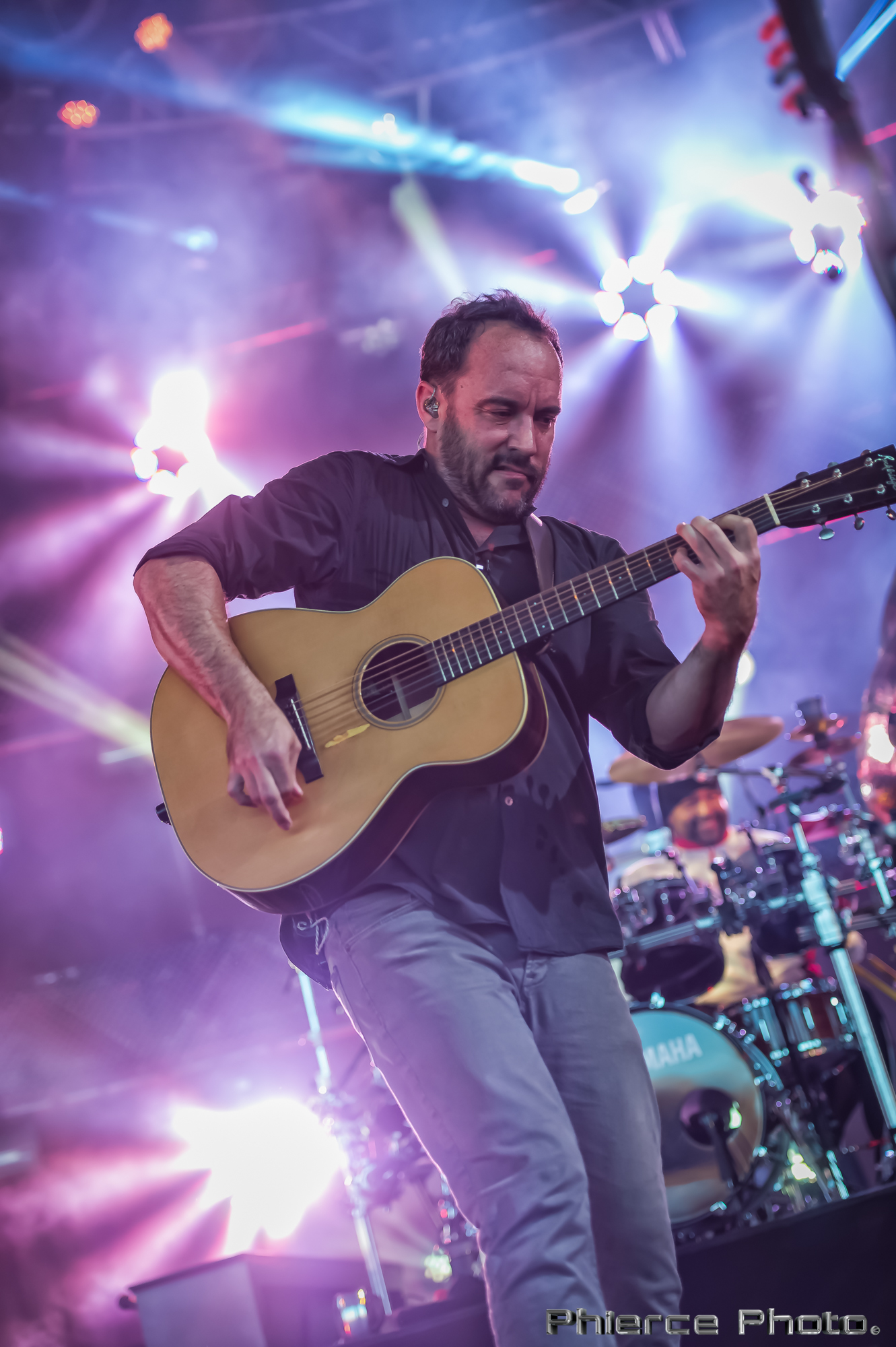
It isn’t an exaggeration to say that everyone in the band has experienced similar growth. Those lost nights in the mid-‘90s, when you were on the lawn, getting high listening to “Dancing Nancies?” Stefan Lessard was going to school onstage. So were Carter Beauford, Boyd Tinsley and Fenton Williams. After arriving, early on, at a sound that worked in arenas and sheds, Dave Matthews Band confronted their version of a glass ceiling in the late ‘90s and early ‘00s: Where to go next? How to continue developing as musicians and remain engaged in the work, while delivering the kind of show that could hold the attention of 20,000 people every night?
That’s when the players began to appreciate the conversational dynamic, Beauford says. “I don’t think it was a conscious thing we stated out loud, but at some point, we began to be more keyed on the chemistry between us onstage than anything else. As the years went on, the music got more mature and we got more mature. We learned how to interact offstage and what buttons not to push with each other. That helped us to relax with the music–to become more open, better listeners.”
Beauford regularly turns up on those “world’s greatest drummers” lists and with good reason: Very few musicians have his fluid sense of pulse, his precise timing, his flair for the crisp understated dramatic gesture. He’s regarded with awe in the music community–and also within the DMB orbit.
“It’s gonna sound corny but when you heard Carter play, it gets you going,” Lessard says as he sits on his bus, plucking out triplet interval studies on his bass. “He’s a powerful catalyst, and he sets a high bar. You’re serious about covering your parts, but you’re looking to do whatever is needed to elevate things.”
When he joined the band, Lessard had been playing bass for less than a year. He had to learn on the job, not just writing smart basslines but also working to “understand what Carter’s doing, and how to fit into that.” He did it, he says, by listening carefully.
“My goal is to make the bass dance inside this music, and that means listening to every accent and offbeat, thinking and not thinking at the same time,” he says.
It’s the last night of the winter tour, just a few days before Christmas. I’m watching Dave Matthews Band for the third time in 2012 and I’m still waiting to hit the “been there/done that” threshold. If there’s going to be some sort of colossal lapse from the band or the crew, then tonight’s probably the night.
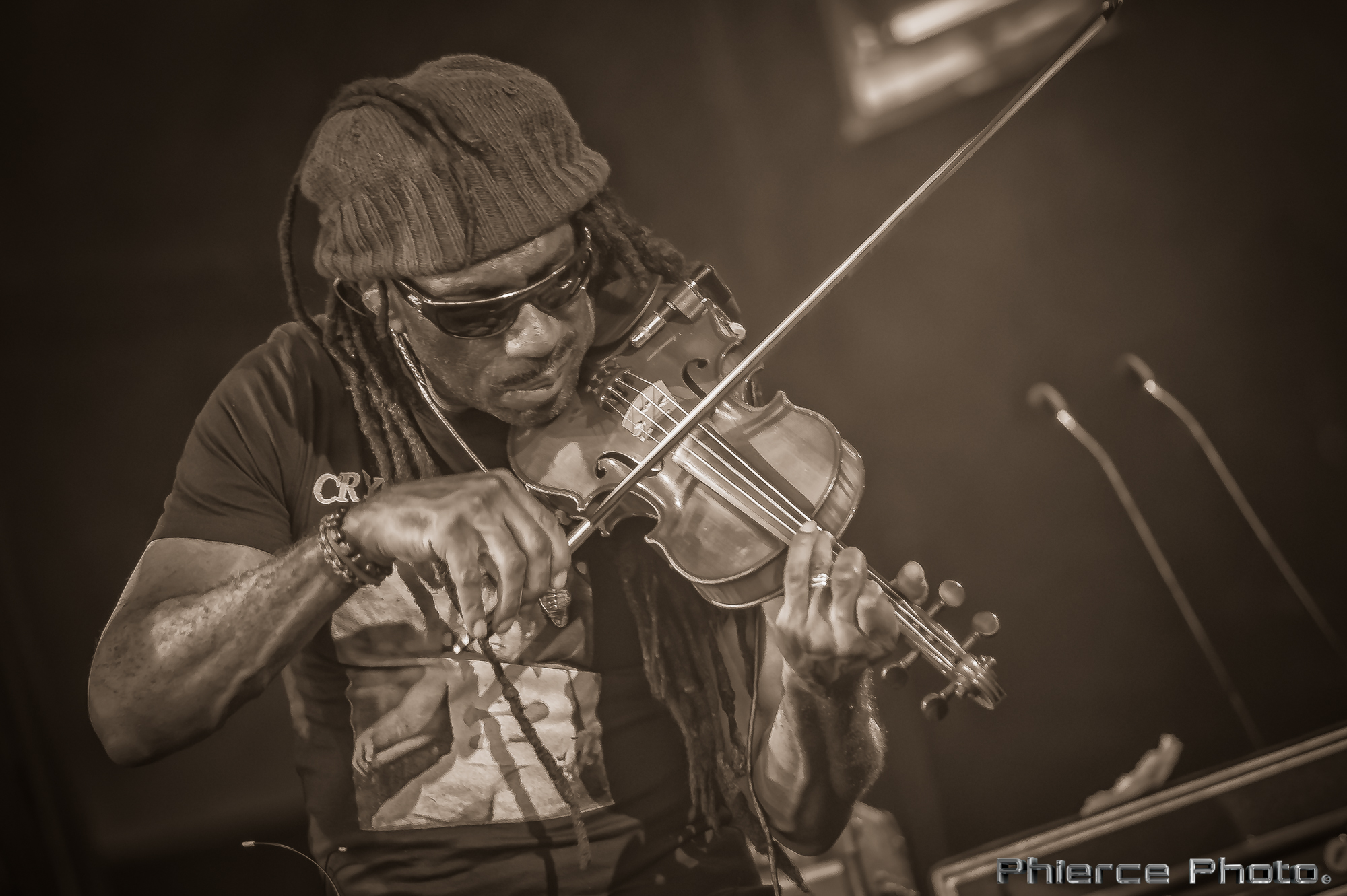 I’ve been thinking about the careers of rock’s enduring bands and how difficult it is to remain creatively vitals when playing to massive crowds year after year. Usually there comes a plateau point, when the spark dims and the shows become a teensy bit formulaic. The masses on the lawn might not notice this drift, but the hardcore devotees do; they find themselves feeling a little “meh” about the experience. They’re not as engaged, usually because the musicians are not completely engaged. That initial disenchantment brings more skepticism–suddenly the new material seems tepid. Pretty soon, the wheels are falling off.
I’ve been thinking about the careers of rock’s enduring bands and how difficult it is to remain creatively vitals when playing to massive crowds year after year. Usually there comes a plateau point, when the spark dims and the shows become a teensy bit formulaic. The masses on the lawn might not notice this drift, but the hardcore devotees do; they find themselves feeling a little “meh” about the experience. They’re not as engaged, usually because the musicians are not completely engaged. That initial disenchantment brings more skepticism–suddenly the new material seems tepid. Pretty soon, the wheels are falling off.
I’m thinking about this as I watch Dave Matthews Band file onto the stage in Philadelphia. Though the band’s been careful about its touring–in 2011, its lightest live-performing year ever, there were only a few festival dates–the musicians have been running the gauntlet of arenas, sheds and stadiums for a long time. Much longer than any of the haters who dismissed them as frat-boy entertainment in the mid-‘90s could have predicted.
Yet, somehow, when they show up for work, these guys are not bored, jaded veterans. They’re immersed in listening to each other and out to see what they can make of the moment. They begin the show with the labyrinth known as “Seven,” a tricky metric challenge that begins in 4/4 then goes into 7/8, with brief detours into 6/8 between sections. The crowd is revved and revving–the DMB ride is underway.
As the groove locks in, the band plays not just with muscle and energy, but with a kind of purposeful zeal and I’m seized with a series of loosely connected thoughts: That in musical terms, there are structural intricacies happening here that rarely turn up in rock; that the audience, for the most part, might not care much about said elements–but would surely miss them if they disappeared into 4/4 blandness.
As the band cleanly executes these devices, it becomes more unified, more fierce, positively exhilarating, and it occurs to me that the demands of the music itself–the hiccupping switchbacks, the filthy nasty funk backbeats–keep everyone involved on the possibilities of the moment. There is a palpable level of engagement here that really does resemble what happens in small jazz settings. As they peer around the musical corners, these guys are genuinely curious about what’s going to happen next. They’re conversationalists in the old-school sense, which means that they do more listening than yammering. That’s not some sort of formula for success–it’s more like an approach, bandwidth or frequency that is wide open for any and all communication. No matter how esoteric the material itself might be, and how much chops the players bring, the musical discussions unfold in the moment with a startling clarity.
At a time when so much music is about the dazzling show, these guys are about talking to you musically. And that makes all the difference.



















